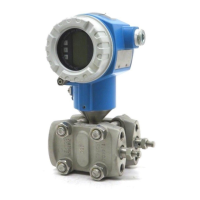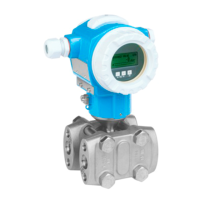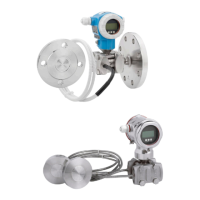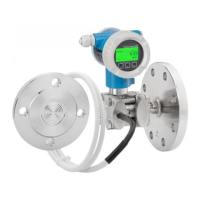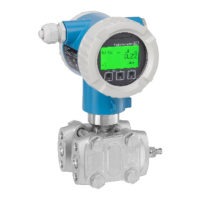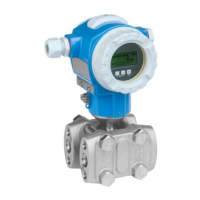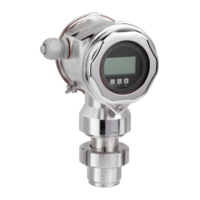Deltabar S FOUNDATION Fieldbus Installation
Endress+Hauser 7
3.3 Installation instructions for devices with diaphragm seals
(FMD78)
!
Note!
• The diaphragm seal, together with the pressure transmitter, forms a closed, calibrated system,
which is filled through openings in the diaphragm seal and in the measurement system of the
pressure transmitter. These openings are sealed and must not be opened.
• Do not remove the protection of the process isolating diaphragm until shortly before
installation.
• When using a mounting bracket, sufficient strain relief must be ensured for the capillaries in
order to prevent the capillary bending down (bending radius 100 mm).
• Please note that the hydrostatic pressure of the liquid columns in the capillaries can cause zero
point shift. You can correct this zero point shift either via the "zero" key on the electronic
insert, or on the outside of the device or via the onsite display. See Page 15, Section 5.2.1
"Position of operating elements", Page 16, Section 5.2.2 "Function of the operating elements
– onsite display not connected" and Page 25, Section 6.3 "Position adjustment".
• Please note the application limits of the diaphragm seal filling oil as detailed in the Technical
Information for Deltabar S TI00382P, Section "Planning instructions for diaphragm seal
systems" or at "www.endress.com/applicator".
In order to obtain more precise measurement results and to avoid a defect in the device, mount
the capillaries as follows:
• vibration-free (in order to avoid additional pressure fluctuations)
• not in the vicinity of heating or cooling lines
• insulate if the ambient temperature is below ore above the reference temperature
• with a bending radius of 100 mm.
• The ambient temperature and length of both capillaries should be the same when using
two-sided diaphragm seal systems.
• Two diaphragm seals which are the same (e.g. with regard to diameter, material, etc.) should
always be used for the negative and positive side (standard delivery).

